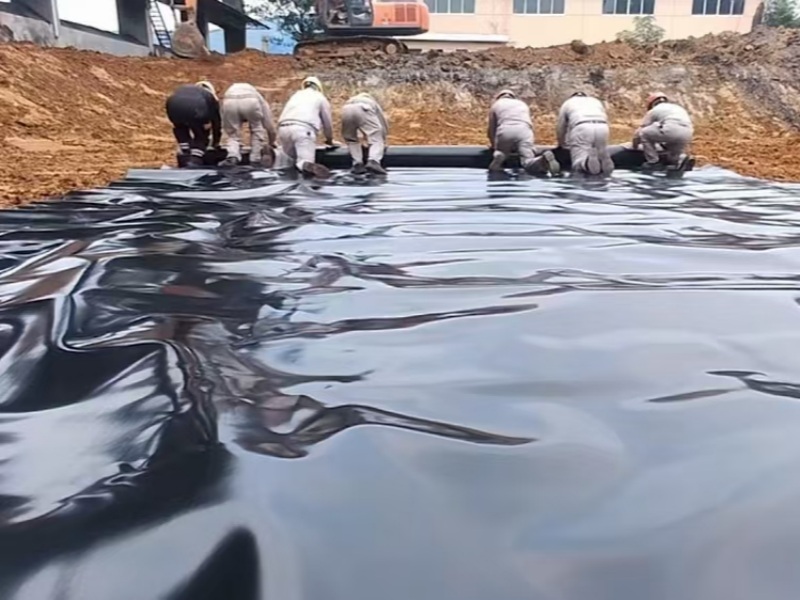What is a Geomembrane? Why is it so effective?
A geomembrane is a very low permeability sheet made primarily from polymers (like polyethylene, PVC). It can be regarded as a flexible, durable, and seamless barrier, effectively preventing the migration of liquids and gases.
When we construct an artificial lake, a wastewater treatment pond, or a landfill, what is the most concerning issue? It is leakage. Whether it's the loss of precious water resources or pollutants seeping into the ground and damaging the ecological environment, it is unacceptable. And geomembrane is the ultimate solution to this challenge.
Its Core Advantages:
Common Types of Geomembranes and Their Applications
Not all geomembranes are the same. The right product must be selected for different engineering needs.
HDPE Geomembrane (High-Density Polyethylene)
Characteristics: High strength, excellent chemical resistance, strong UV resistance, longest service life. The most widely used type.
Applications: Landfills (core liner), Sewage Treatment Plants, Hazardous Waste Sites, Large Reservoirs/Artificial Lakes.
LLDPE Geomembrane (Linear Low-Density Polyethylene)
Characteristics: Softer than HDPE, better elongation and stress crack resistance, adapts better to uneven settlement.
Applications: Aquaculture Ponds, Landfill Covers, Impermeability Projects with Complex Topography.
PVC Geomembrane (Polyvinyl Chloride)
Characteristics: Excellent flexibility, easy installation and laying, relatively low cost.
Applications: Landscape Water Features, Irrigation Canals, Basement Moisture Proofing.
Core Application Areas of Geomembranes
Environmental Engineering:
Landfills, Sewage Treatment, Industrial Tailings Ponds.
Water Conservancy & Water Features:
Reservoirs, Artificial Lakes, Aquaculture Ponds, Irrigation Canals.
Construction & Municipal Engineering:
Basement/Tunnel Waterproofing, Green Roof Waterproofing.
Five Key Points for Selecting High-Quality Geomembranes
Raw Material & Quality: Virgin prime HDPE resin ensures stable performance.
Physical & Mechanical Indicators: Thickness, Tensile Strength, Elongation, Tear/Puncture Resistance.
Durability Indicators: Carbon Black Content (2-3%), UV Resistance.
Supporting System & Installation: Includes protective geotextiles, drainage geocomposites, and professional welding/QA testing.
Supplier Professionalism: Provides quality certifications, technical data, and professional guidance.
Why is Nuokun Geo Your Ideal Choice for Geomembranes?
At Norkun Geo, we deeply understand the significant responsibility of waterproofing projects. What we provide is not just products, but a guarantee of safety.
Full Range of High-Quality Products
Strict Quality Control
One-Stop System Solutions
Rich Project Experience
Conclusion
The geomembrane, this seemingly simple polymer sheet, carries the heavy responsibility of protecting water resources and the ecological environment. Choosing and using it correctly is the cornerstone of every successful impermeability project.
If you are looking for reliable impermeability solutions for your project, please feel free to contact the professional team at Nuokun Geo. Let's use reliable geomembrane products to build a strong impermeability wall for your project!
